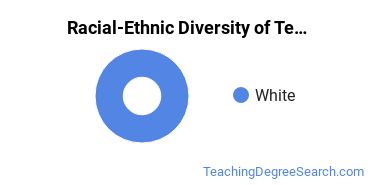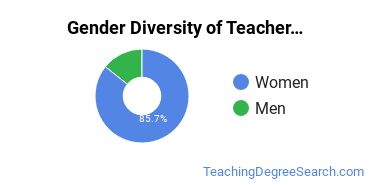Teacher Education Grade Specific at Ohio Christian University
Every teacher education grade specific school has its own distinct culture and strengths. We've pulled together some statistics and other details to help you see how the grade specific ed program at Ohio Christian University stacks up to those at other schools.OCU is located in Circleville, Ohio and has a total student population of 2,186.
Want to know more about the career opportunities in this field? Check out the Careers in Teacher Education Grade Specific section at the bottom of this page.
OCU Teacher Education Grade Specific Degrees Available
- Associate’s Degree in Grade Specific Ed
- Bachelor’s Degree in Grade Specific Ed
- Master’s Degree in Grade Specific Ed
OCU Teacher Education Grade Specific Rankings
The grade specific ed major at OCU is not ranked on College Factual’s Best Colleges and Universities for Teacher Education Grade Specific. This could be for a number of reasons, such as not having enough data on the major or school to make an accurate assessment of its quality.
Grade Specific Ed Student Demographics at OCU
Take a look at the following statistics related to the make-up of the grade specific ed majors at Ohio Christian University.
OCU Teacher Education Grade Specific Associate’s Program

The majority of those who receive an associate's degree in grade specific ed at OCU are white. Around 100% fell into this category, which is below average for this degree.
The following table and chart show the race/ethnicity for students who recently graduated from Ohio Christian University with a associate's in grade specific ed.

| Race/Ethnicity | Number of Students |
|---|---|
| Asian | 0 |
| Black or African American | 0 |
| Hispanic or Latino | 0 |
| White | 3 |
| International Students | 0 |
| Other Races/Ethnicities | 0 |
OCU Teacher Education Grade Specific Bachelor’s Program

About 85% of those who receive a bachelor's degree in grade specific ed at OCU are white. This is above average for this degree on the nationwide level.
The following table and chart show the race/ethnicity for students who recently graduated from Ohio Christian University with a bachelor's in grade specific ed.

| Race/Ethnicity | Number of Students |
|---|---|
| Asian | 1 |
| Black or African American | 0 |
| Hispanic or Latino | 0 |
| White | 11 |
| International Students | 0 |
| Other Races/Ethnicities | 1 |
OCU Teacher Education Grade Specific Master’s Program

Of the students who received a grade specific ed master's degree from OCU, 100% were white. This is above average for this degree on the natiowide level.
The following table and chart show the race/ethnicity for students who recently graduated from Ohio Christian University with a master's in grade specific ed.

| Race/Ethnicity | Number of Students |
|---|---|
| Asian | 0 |
| Black or African American | 0 |
| Hispanic or Latino | 0 |
| White | 2 |
| International Students | 0 |
| Other Races/Ethnicities | 0 |
Concentrations Within Teacher Education Grade Specific
The following grade specific ed concentations are available at Ohio Christian University. The table shows all degrees awarded in this field awarded for all degree levels at Ohio Christian University. A concentration may not be available for your level.
| Concentration | Annual Degrees Awarded |
|---|---|
| Teacher Development & Methodology | 22 |
Related Majors
Careers That Grade Specific Ed Grads May Go Into
A degree in grade specific ed can lead to the following careers. Since job numbers and average salaries can vary by geographic location, we have only included the numbers for OH, the home state for Ohio Christian University.
| Occupation | Jobs in OH | Average Salary in OH |
|---|---|---|
| High School Teachers | 52,240 | $61,930 |
| Elementary School Teachers | 51,880 | $62,430 |
| Middle School Teachers | 32,080 | $62,130 |
| Preschool Teachers | 15,390 | $29,020 |
| Self-Enrichment Education Teachers | 8,320 | $39,540 |
References
*The racial-ethnic minorities count is calculated by taking the total number of students and subtracting white students, international students, and students whose race/ethnicity was unknown. This number is then divided by the total number of students at the school to obtain the racial-ethnic minorities percentage.
More about our data sources and methodologies.
